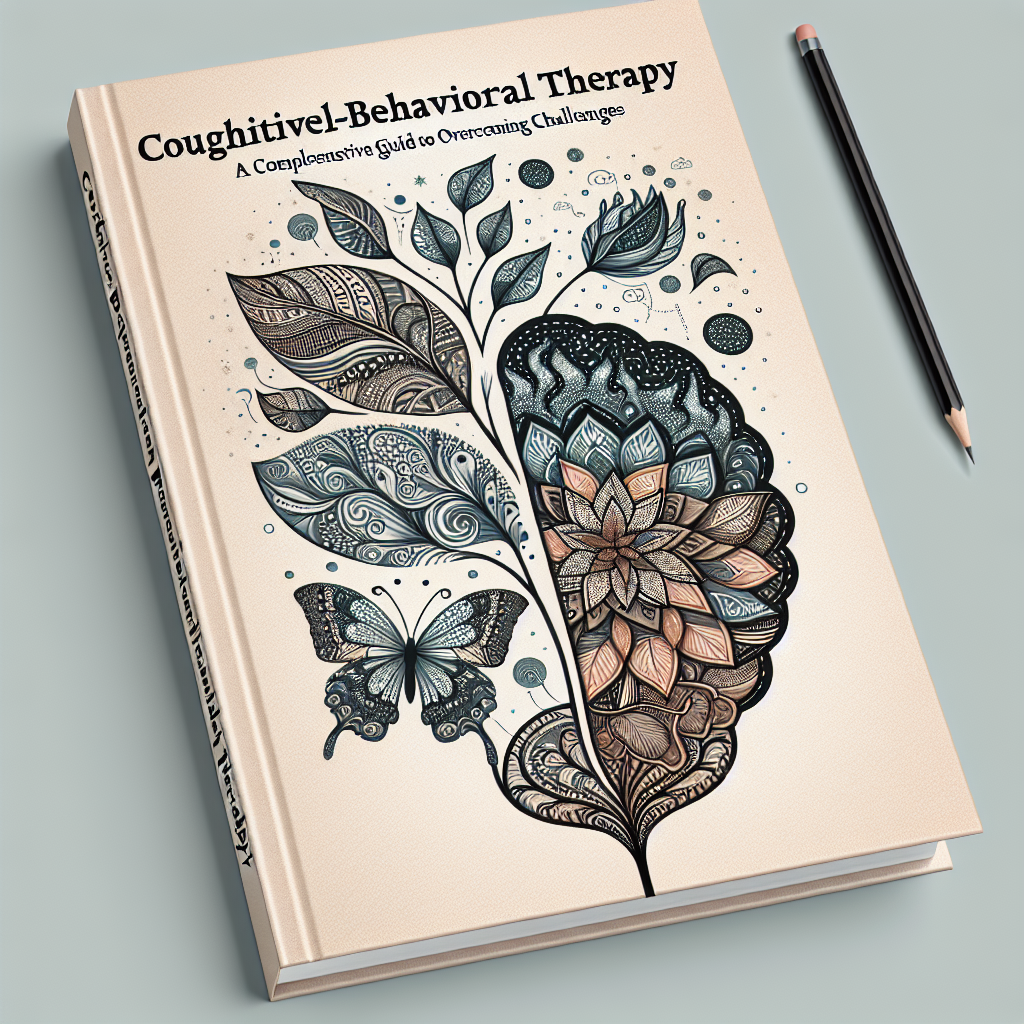
Introduction
In today’s fast-paced world, mental health issues are more prevalent than ever. People face various challenges, from anxiety and depression to stress management and relationship difficulties. In the quest for solutions, Cognitive-Behavioral Therapy (CBT) emerges as a beacon of hope. This comprehensive guide will delve deep into CBT, exploring its core principles, effectiveness, and practical applications for overcoming everyday challenges.
The beauty of CBT lies not just in its scientific backing but in its transformative power. Let’s explore how Cognitive-Behavioral Therapy: A Comprehensive Guide to Overcoming Challenges can empower individuals to reclaim their lives, mitigate problems, and foster emotional resilience.
Understanding Cognitive-Behavioral Therapy (CBT)
What is CBT?
Cognitive-Behavioral Therapy is a structured, time-limited psychotherapeutic approach that helps individuals identify and challenge distorted thought patterns and behaviors. Developed in the 1960s by psychiatrist Aaron Beck, CBT bridges the gap between cognitive psychology and behavioral therapy. The premise of CBT is straightforward: our thoughts, feelings, and behaviors are interconnected.
Key Components of CBT
Cognitive Restructuring: This involves identifying negative thought patterns and replacing them with balanced, realistic ones.
Behavioral Activation: Encouraging engagement in positive activities can combat feelings of depression and anxiety.
- Skills Training: CBT equips individuals with practical tools to deal with future challenges.
The Science Behind CBT
How Effective is CBT?
Research shows that Cognitive-Behavioral Therapy is incredibly effective for a range of mental health issues. According to a meta-analysis, approximately 60-70% of individuals undergoing CBT show significant improvement in their symptoms.
Table 1: Effectiveness of CBT
| Disorder | Response Rate (%) |
|---|---|
| Major Depression | 50-70 |
| Generalized Anxiety | 60-80 |
| PTSD | 70-90 |
| OCD | 50-60 |
Case Study: Overcoming Anxiety with CBT
Consider Sarah, a 28-year-old graphic designer suffering from generalized anxiety disorder (GAD). After undergoing CBT, she learned to identify cognitive distortions like catastrophizing and filter through her anxious thoughts. With her therapist’s guidance, she practiced relaxation techniques and gradually faced her fears. Within a few months, Sarah reported a significant decrease in her anxiety symptoms, illustrating the transformative power of Cognitive-Behavioral Therapy: A Comprehensive Guide to Overcoming Challenges.
Practical Applications of CBT
Daily Challenges
The principles of CBT aren’t limited to clinical settings; they can be integrated into everyday life. Here’s how individuals can apply CBT techniques to common challenges:
Workplace Stress: Engaging in cognitive restructuring techniques can help reframe overwhelming responsibilities as manageable tasks.
Relationship Issues: Identifying negative assumptions about a partner’s actions can improve communication and conflict resolution.
- Health-related Anxiety: Recognizing unfounded fears regarding health can alleviate excessive worry and promote healthier lifestyle choices.
Tools and Techniques
Chart 1: Common CBT Techniques
| Technique | Description |
|---|---|
| Thought Record | Documenting negative thoughts and challenging them |
| Exposure Therapy | Gradual exposure to feared situations |
| Behavioral Experiments | Testing beliefs through real-world experiences |
Overcoming Specific Challenges
Depression
CBT’s focus on changing negative thought patterns is particularly potent for individuals suffering from depression. Research indicates that CBT may be as effective as medication for some people, leading to long-lasting improvements.
Anxiety Disorders
CBT’s efficacy in treating anxiety disorders, including panic disorder and social anxiety, has been widely established. Techniques such as exposure therapy allow individuals to confront their fears in a controlled, gradual manner.
PTSD
Cognitive-Behavioral Therapy has shown exceptional outcomes for PTSD sufferers by utilizing exposure therapies and cognitive restructuring to help patients process traumatic events.
Case Study: Healing from PTSD
John, a 35-year-old veteran, faced severe PTSD after returning from deployment. Through CBT, he learned to confront memories of trauma safely. This structured approach allowed him to process his experiences without overwhelming distress. Over the course of several months, John’s symptoms significantly decreased, showcasing Cognitive-Behavioral Therapy: A Comprehensive Guide to Overcoming Challenges in addressing complex conditions.
Building Resilience through CBT
Developing Coping Strategies
CBT teaches individuals how to develop effective coping strategies. These strategies enhance resilience and enable quicker recovery from setbacks. Some of these include:
Mindfulness Practices: Incorporating mindfulness can help in grounding oneself during distressing moments.
Problem-Solving Skills: Learning to approach issues systematically can reduce feelings of helplessness.
- Self-Compassion: Emphasizing self-kindness and understanding can combat negative self-perception.
The Role of the Therapist
Finding the Right Therapist
The effectiveness of CBT often hinges on the relationship between the therapist and the client. It’s essential to find a qualified professional who utilizes evidence-based methods tailored to individual needs.
Collaborative Goal Setting
The therapist-client relationship should be collaborative, with shared goals that guide therapy. This approach fosters a sense of ownership and accountability in the therapeutic process.
Conclusion
Cognitive-Behavioral Therapy: A Comprehensive Guide to Overcoming Challenges offers a powerful framework for understanding and addressing mental health issues. By focusing on the intricate connection between thoughts, feelings, and behaviors, CBT empowers individuals to challenge and transform their lives positively.
Taking the first step towards healing can feel daunting, but remember: the journey of a thousand miles begins with a single step. Start today by embracing the principles of CBT and equip yourself with the tools necessary for long-lasting change.
Embrace your potential, and let this guide serve as a roadmap to navigate life’s challenges with confidence and resilience.
FAQs
1. What is the duration of a typical CBT program?
Most CBT programs last between 12 to 20 sessions, depending on the individual’s needs and the complexity of issues being addressed.
2. Can CBT be done online?
Yes! Many licensed therapists offer CBT through teletherapy, making it accessible from the comfort of your home.
3. Is CBT suitable for children and adolescents?
Absolutely! CBT has been adapted and proven effective for younger populations, particularly for anxiety and depression.
4. What is the difference between CBT and medication?
CBT focuses on changing behaviors and thought patterns, while medication is used to manage symptoms. Many find that a combination of both works best.
5. How can I start using CBT techniques on my own?
Start by keeping a thought journal, practicing mindfulness, and gradually exposing yourself to feared situations. Online resources and apps can also support self-guided CBT.
This comprehensive guide aims to highlight Cognitive-Behavioral Therapy: A Comprehensive Guide to Overcoming Challenges uniquely and engagingly. It’s designed to inspire readers and make mental health recovery an achievable journey. Remember, the power lies within you to change your thoughts and, ultimately, your life.

















